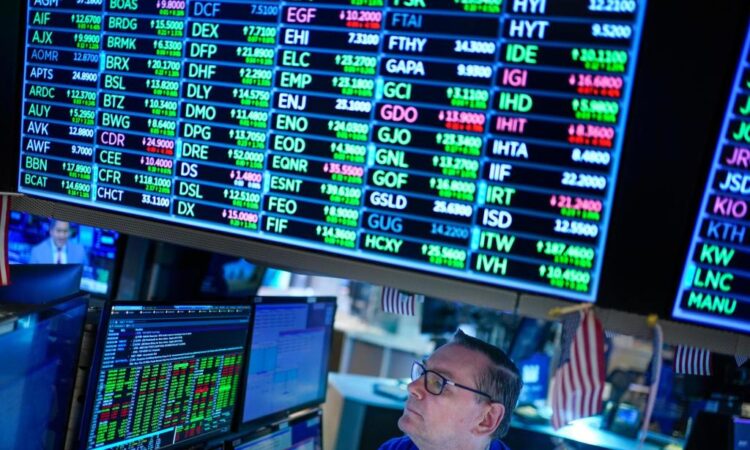
Traders work on the floor at the New York Stock Exchange in New York, Wednesday, June 15, 2022. U.S. stocks are rallying Wednesday and are on track for their first gain in six days. But more turbulence may be ahead when the Federal Reserve announces in the afternoon how sharply it’s raising interest rates. (AP Photo/Seth Wenig)
A year ago, many economists were predicting a recession in 2023. It didn’t happen, and inflation has fallen sharply. The consensus outlook is a bit rosier, arguing that 2024 will also avoid a downturn.
But a recession delayed is not one denied, economist Elliot Eisenberg argued before a large crowd of Denver area real estate agents gathered Thursday morning for the Denver Metro Association of Realtors Economic Summit.
“Nothing is awful, but I do think that we get a recession,” said Eisenberg, who doubled down after his call for a recession in the middle of 2023 didn’t pan out.
Consumer spending represents about 70% of the U.S. economy and consumers have been “spending their brains out,” a key reason GDP growth held up so well last year despite rising prices, Eisenberg said.
Consumers are spending so robustly that expenditures have returned to the trajectory they were on before the pandemic, he said. The problem is that wages have not kept pace, and after adjusting for inflation are about $1 trillion short of where they should be to support that kind of spending.
A strong labor market and surplus savings, to the tune of $2.1 trillion built up during the pandemic, have allowed households to keep on spending. That savings surplus fell to under $400 billion late last year and is draining fast.
Credit card debt is rising rapidly, despite elevated interest rates. And the household savings rate has hit a very low level, even though unemployment hit a five-decade low. People should be saving more, but they aren’t.
“We are running out of money and this makes me nervous,” he said.
Unemployment rates remain low but have bounced off the bottom. And the pace of hiring is slowing and still looks good, but with a caveat.
“We are hiring workers, but the number of hours worked is not going up,” he said. Companies may be hedging their bets, bringing workers on but not deploying them to their full potential.
Eisenberg said if the rate of hiring can average 150,000 a month this year, the country will sidestep a recession. If it drops to around 100,000, any recession will be mild. And if it goes flat or negative, people will be hurting.
If consumers do pull back on their spending, can the other 30% of GDP consisting of government spending, capital investment and trade cover the gap?
Eisenberg doesn’t think so. Higher rates have slowed capital spending and banks are tightening their lending standards and building reserves up to deal with bad loans tied to commercial real estate.
The U.S. trade deficit is widening, reversing the boost that stronger exports provided in recent years. Signs are emerging that the service sector is weakening and could roll over, joining manufacturing, which has been contracting for the past year.
Given how much the federal government has spent since the pandemic, how divided Congress is, and that the Federal Reserve is still trying to get inflation under control, another big shot of fiscal stimulus isn’t likely to save the day.
The U.S. federal debt is at a record $34 trillion and the federal deficit in fiscal year 2023 ran $1.7 trillion, which is huge given there wasn’t any recession, according to the Committee for a Responsible Federal Budget.
Since 1955, out of the 13 times that the Federal Reserve tightened monetary policy, a recession followed 10 times, Eisenberg said. Strong fiscal spending in 1964 as the Vietnam war ramped up staved off a recession in that cycle, while depressed energy costs buoyed consumers in the 1984 rate cycle and the nascent tech boom held off a downturn when rates were lifted in 1994.
The Fed began raising interest rates in March 2022, and on average it takes about 27 months for a recession to show up when it does.
“We will now feel the accumulation of all those rate hikes,” he said.
The money supply is contracting, another strong indicator of a coming recession. Investors have been demanding more interest for short-term debt than they are for long-term loans, causing the yield curve to “invert.” All eight times that has happened, a recession has followed.
And if all that weren’t enough, the Leading Economic Indicators from the Conference Board are signaling a recession.
The odds are increasingly stacked in favor of a recession, Eisenberg said. But he expects a fairly standard downturn, not a severe one, lasting about eight or nine months.






